
[116] Digitalis purpurea, Foxglove
Introduction
Digitalis purpurea, the (Common) Foxglove, is a familiar deep purple wildflower, widely cultivated as a garden plant.
All the species of Digitalis, and several other plants, have common names including the word foxglove.
Taxonomy
Kingdom – Plants
Division – Vascular Plants
Class – Angiosperms (Flowering Plants)
Order – Lamiales
Family – Plantaginaceae
Tribe – Digitalideae
Genus – Digitalis
Scientific Name – Digitalis purpurea
There are several varieties, cultivars and hybrids.
Until 2001, the Foxglove was in the family Scrophulariaceae. Following scientific studies, it was moved to a new family Veronicaceae briefly, but the complicated rules for restructuring now call its family Plantaginaceae.
Name
In Old English this plant was called foxes glofa and it was associated with the folk myth that foxes wore them on their paws to silence their movements as they stalked prey. Fox dens were often found in areas covered with Digitalis purpurea.
The name Digitalis was invented by Leonhart Fuchs in 1542. (See [112] Common Spotted Orchid and [153] Fuchsia.) It comes from the Latin for finger, digitus based on the common German name for the plant, which was Fingerhut – ‘finger hat’ or thimble. Purpurea, of course, means purple.
Description
I think of Foxgloves as being like Lupins, although they are not related and are not at all similar. My memories of gardens when I was very young are of lots of small annuals like pansies, some shrubs and trees and … and things like Foxgloves and Lupins. Both are plants with one or more impressive vertical stalks bearing lots of flowers that would sit at the back of the garden with smaller annual plants in front of them.
Wikipedia agrees with me but puts it more prosaically. Digitalis purpurea is a biennial plant. There are leaves that emerge in the first year but they stay near the ground. The flower stems come in the second year and are from one to two metres tall. They have a long row of purple flowers shaped like hanging thimbles, heavily spotted inside.

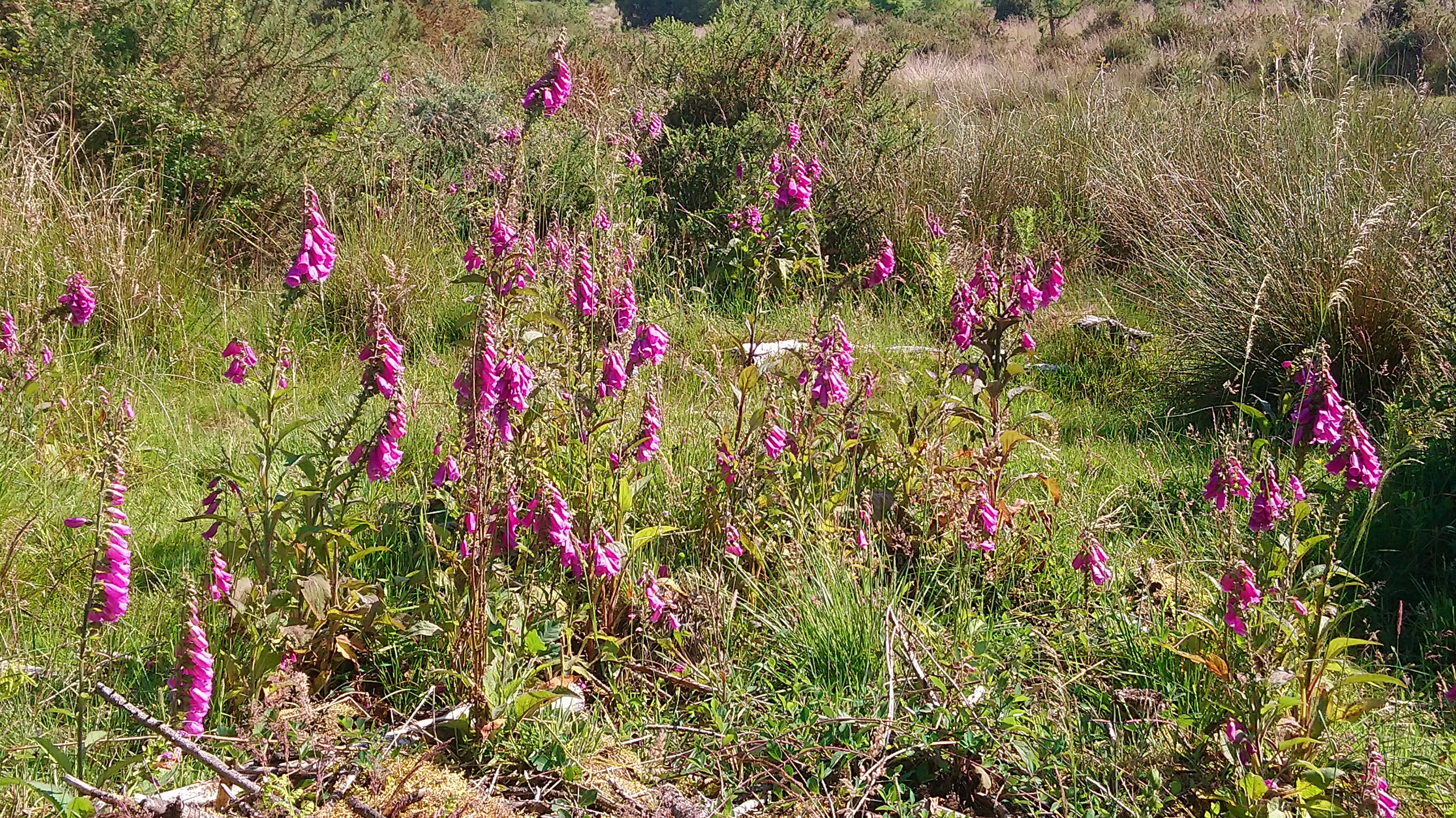

The pictures above are from a wild area in the Forest of Dean.
Dark purple is the usual colour but genetic variation can produce three other types – light purple, white with purple spots, and all white (with yellow spots.)
Cultivated plants can have other colours such as pink and cream.
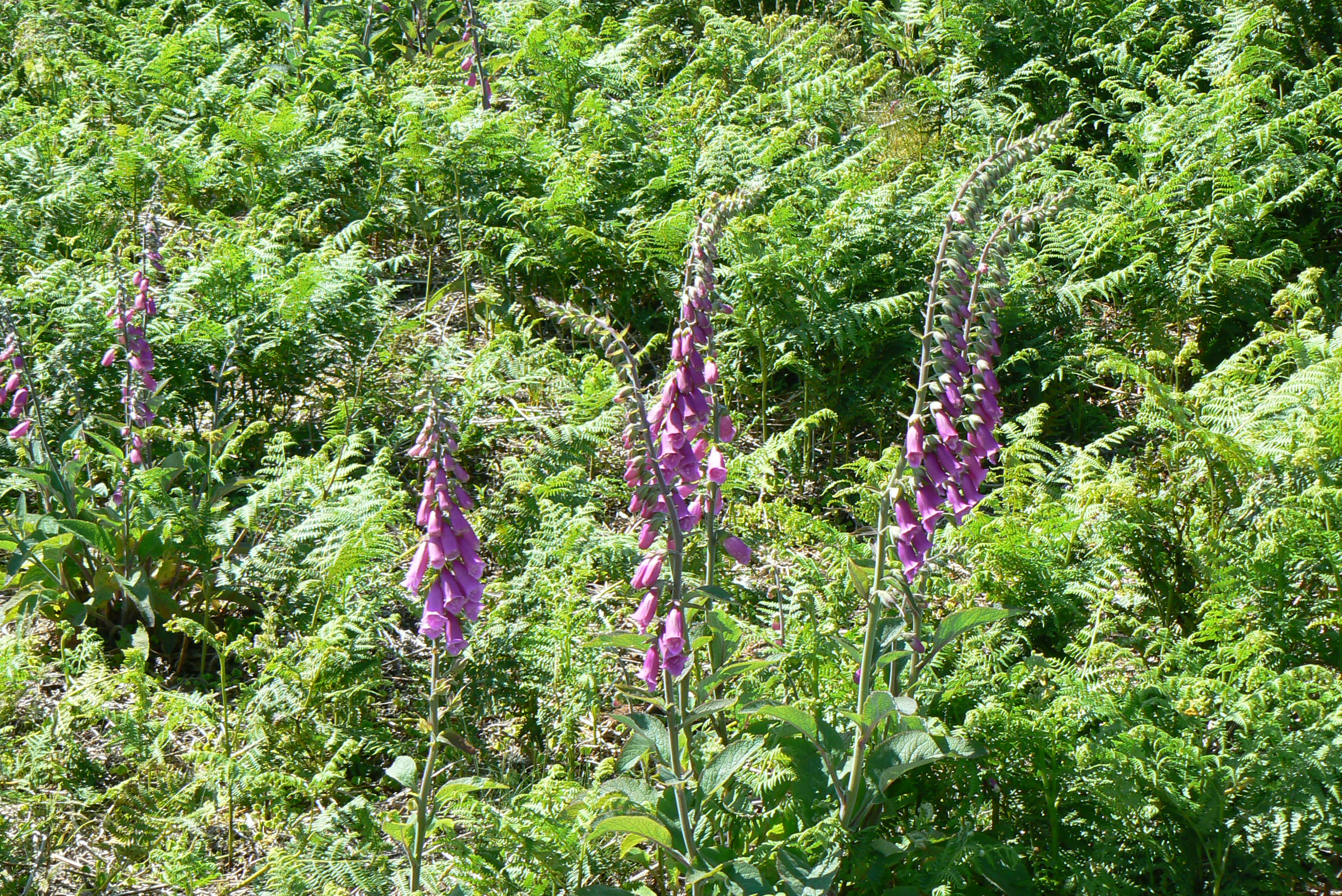
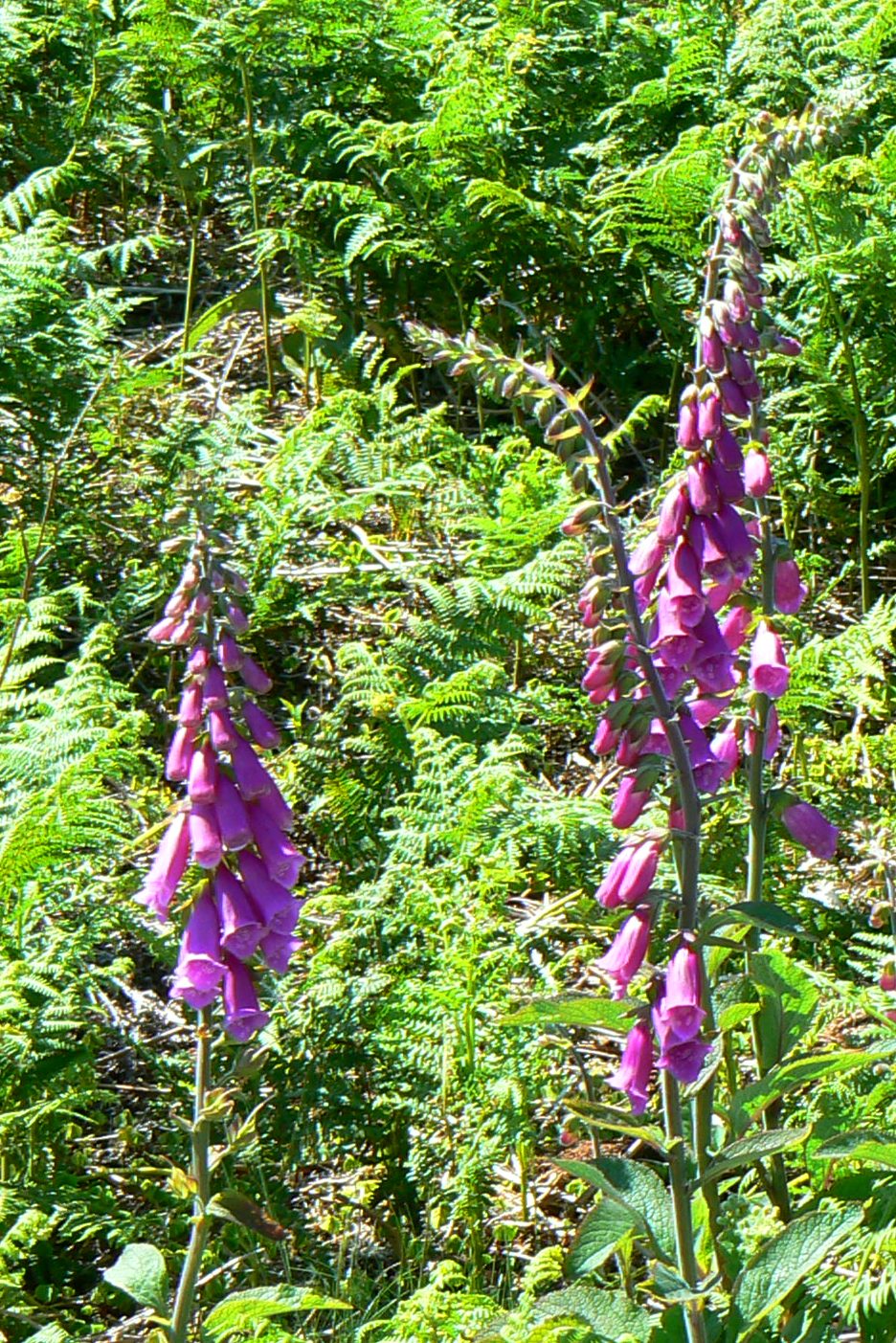

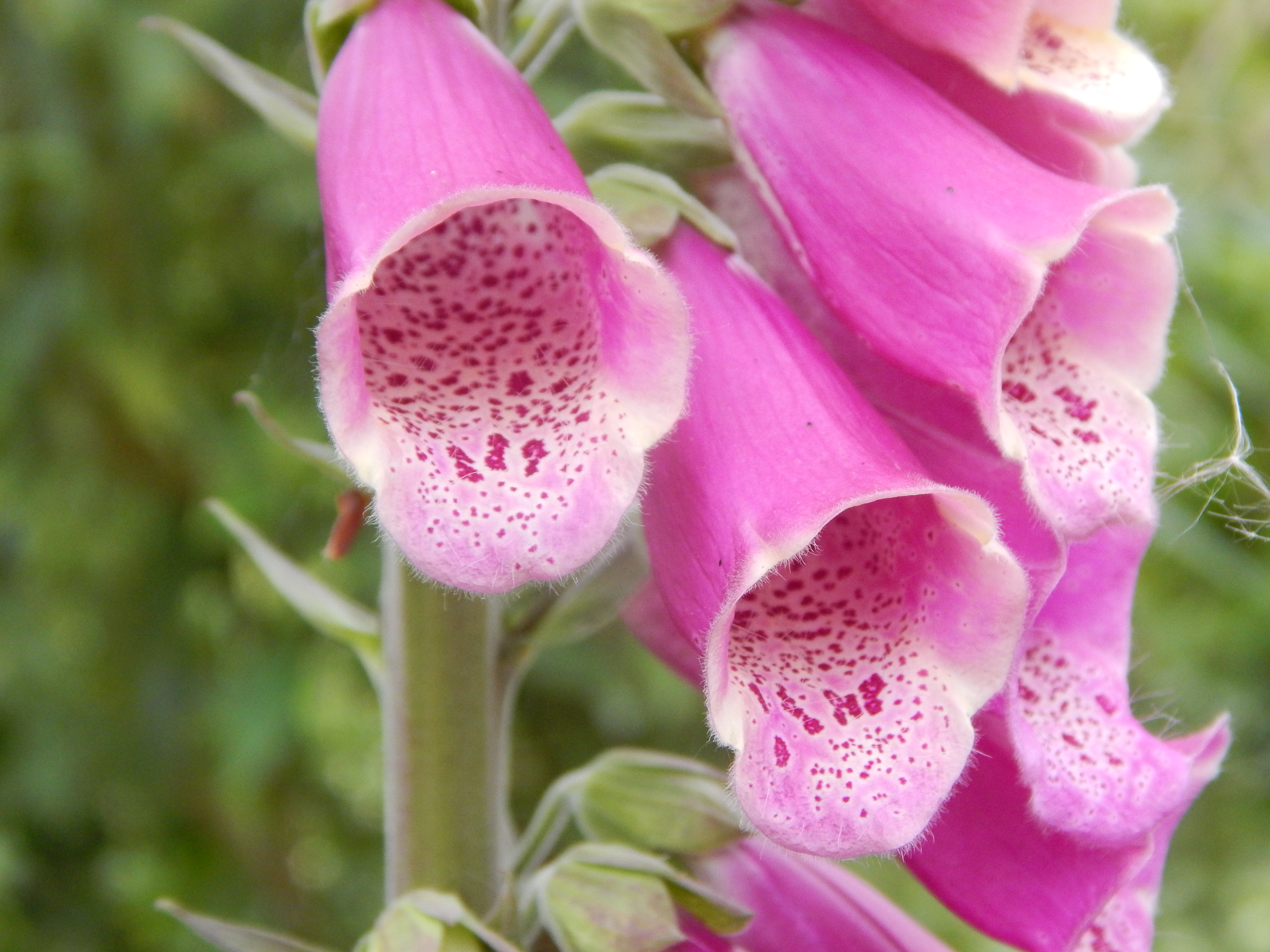
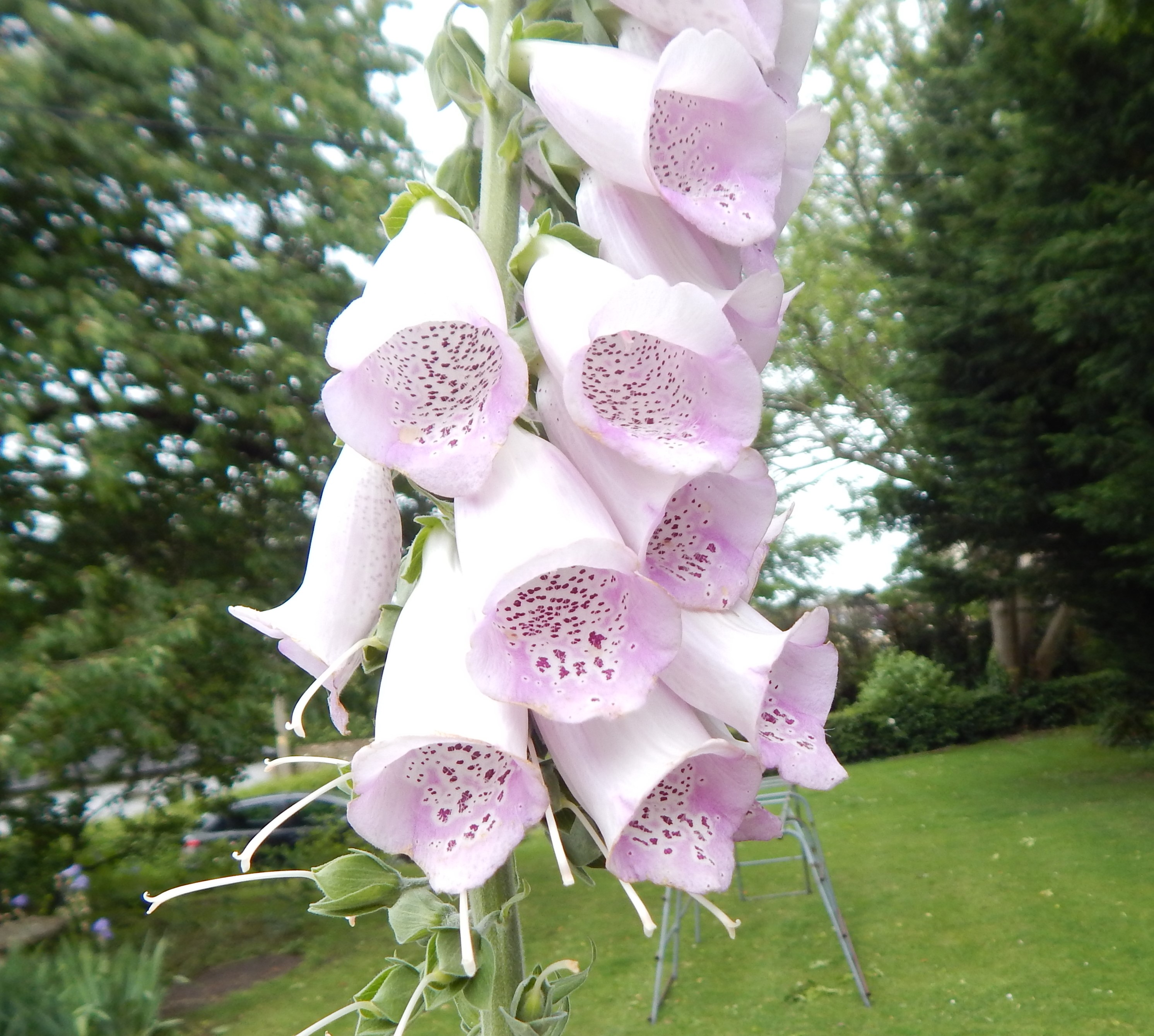

Habitat and use
The Foxglove is native to most of temperate Europe including all of Britain.
Several species of Digitalis are cultivated as ornamental plants, including some hybrids and cultivars.
Digitalis purpurea is the origin of the medicines digitoxin and digoxin (also called digitalis or digitalin.) Both of these are poisonous and all parts of the plants are poisonous. When refined and used in appropriate doses digoxin is used to treat some heart conditions. (Digitoxin has largely been replaced by the similar digoxin in medicine’)
Other Notes
Flowers open from the bottom upwards.

If you look at the picture above from top to bottom the buds turn to flower, then larger flowers, with developing fruits at the bottom. All wild plants have the flowers all to one side but some cultivars have been developed with flowers all round the stem.

See Also
I might have said look out for Lupins, Lupinus polyphyllus, also called Lupines, but they have gone out of fashion. They are still available as garden plants but are not common enough for me to include them in this blog. (The word lupine means like a wolf, which is a very tenuous link to foxgloves!)
